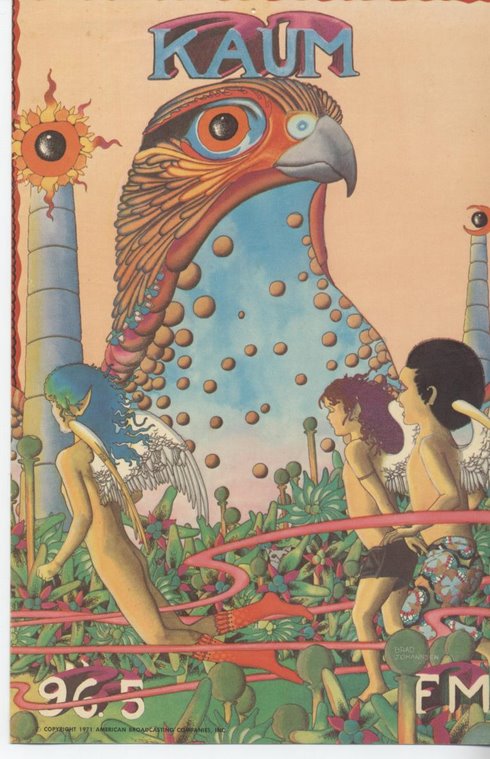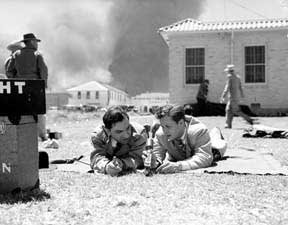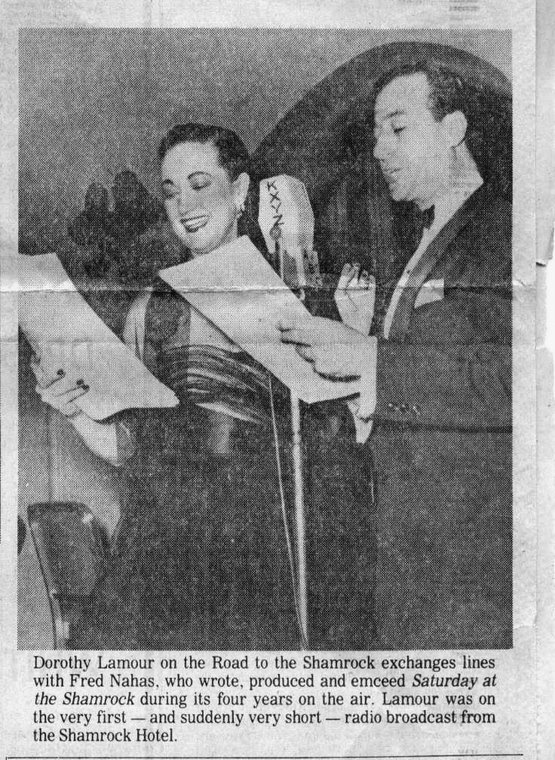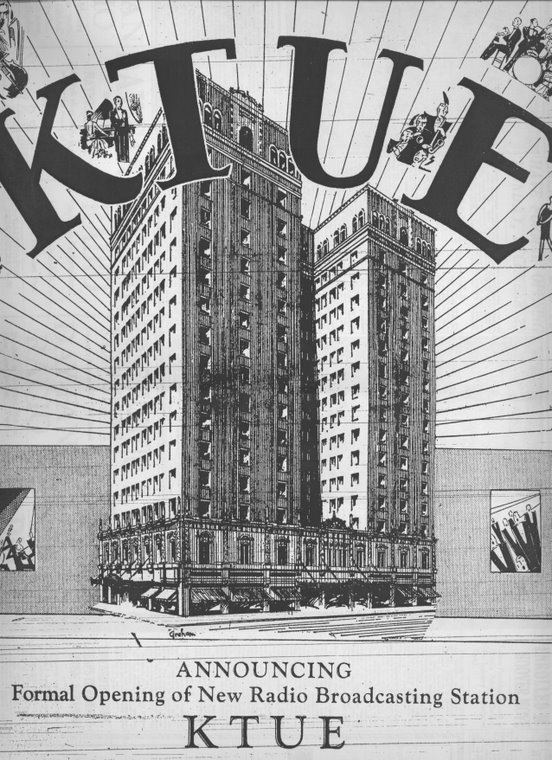Just as a new show was being developed out of Vox Pop, KXYZ had it’s own big changes on tap. On the first of July, 1937, Tilford Jones, President of Harris County Broadcasters, announced that KXYZ would be affiliating with the NBC Blue Network on August 1st. Ten stations joined the network on that date; the Southern Blue Network was comprised of 22 stations in all but I have not been able to determine if there was special programming or why the group was considered ‘Southern.’ NBC had offered the Blue Network since the late 1920s and also had other special networks such as the Orange and White. It's been suggested one reason for the delay in signing up may have been the high cost of leasing AT&T lines and the network's reason for existence may have been appeal to advertisers of a regional group. The switch was thrown at 7am on August 1 and the first Blue program heard on KXYZ was ‘Coast to Coast on a Bus’ with Milton Cross.
The other stations joining NBC Blue on that day were WAGA, Atlanta, WSON, Birmingham, WNBR, Memphis, WROL, Knoxville, WJOB, Baton Rouge, WDSU, NOLA, KFDM, Beaumont, KRIS, Corpus Christi and KRGV, Weslaco, TX.
NBC commissioned a special Blue Network Gown to be given away, a ‘lovely dance frock.’ To win it, women had to submit a 50 word essay explaining what they would say if they won. The winner was to be announced during a special broadcast of the Sakowitz Hour of Fashion from the Rice Hotel Roof Garden.
A nationwide broadcast welcoming the new stations to the network would originate from New York, Chicago and San Francisco and feature several dozen performers. Among the programs KXYZ would be carrying as a result of the affiliation were the Radio Guild, National Farm Hour and The Breakfast Club from Chicago with Don McNeill. There would also be live sporting events and symphony orchestras.
There was more big news from KXYZ on December 30, 1937. A story in the Chronicle announced that when the station signed on at 6:30am on the 31st it would become a 24 hour a day operation, only the second in the country it was claimed. Tilford Jones and T. Frank Smith, managers of KXYZ, stated they had realized for some time the need for such a service. The only other US station said to be operating 24 hours a day was on the West Coast (the call letters were not mentioned in the story) and other than that workers on the third shift had to listen to Mexican radio stations in the middle of the night. There were said to be 546,000 people in the KXYZ listening area and an estimated 50 to 75 thousand of them were third shift workers at gas stations, refineries, etc. Many trucking companies were said to have installed radios in their trucks to help keep their drivers awake. Test broadcasts of the service had already drawn mail from South America and overseas and it was anticipated there would be a possible audience of several hundred thousand throughout the South and elsewhere.
The Houston Post radio guide for New Year’s Day included a schedule for KXYZ’s  overnight programming but there no accompanying story. The schedule for January 1, 1938 included America Dances from NBC from Midnight to 4am. Also on the schedule was Mac Clark and his Orchestra from the Aragon Ballroom from 4 to 4:30, Dance Music from 4:30 to 5, the KXYZ Fishing News from 5 to 5:15, The Texas Drifter from 5:15 to 5:30, Popular Melodies from 5:30 to 6, and The Eye Opener Program at 6 am. The Fishing News had previously been on the air at 9pm in the evening and would be updated for the 5am broadcast.
overnight programming but there no accompanying story. The schedule for January 1, 1938 included America Dances from NBC from Midnight to 4am. Also on the schedule was Mac Clark and his Orchestra from the Aragon Ballroom from 4 to 4:30, Dance Music from 4:30 to 5, the KXYZ Fishing News from 5 to 5:15, The Texas Drifter from 5:15 to 5:30, Popular Melodies from 5:30 to 6, and The Eye Opener Program at 6 am. The Fishing News had previously been on the air at 9pm in the evening and would be updated for the 5am broadcast.
The networks were not regularly on 24 hours a day. For New Year’s, they usually started coverage at Midnight, Eastern Time, and stayed with it until the New Year arrived on the West Coast. For 1938, for the first time, NBC planned to stay on until 4am Eastern.
The claim that KXYZ was only the second station in the nation to go 24 hours a day has not been verified and likely isn’t true according to this article which identifies the West Coast station referred to in the Chronicle story as KGFJ, Los Angeles, which had inaugurated 24 hour a day service in November, 1927, 10 years earlier. Additionally, Arthur Godfrey supposedly was the first all-night DJ on a station in Washington, DC, in January, 1934, four years before KXYZ and not on the West Coast, but whether ‘all-night’ meant that literally is not clear. It is believed some stations may have operated 24 hours a day on occasion, such as during weather emergencies, but most stations still signed off if only for an hour or so to check their equipment before beginning a new broadcast day.
Still, KXYZ was the first station in Houston to do it and may well have been the first in Texas or the South.
Just how long the expanded schedule lasted is not known but KXYZ has not been on the air 24 hours a day since New Year’s Day, 1938. The linked article indicates 24 hour a day broadcasting became popular during World War II for all night factory workers, etc. but the opposite seems to have happened here in Houston. In the early 1940s, radio listings in the Houston papers indicated the 24 hour a day schedule was still in effect on KXYZ but sometime during the war it was dropped and it was not until August, 1946, when KTHT began 24 hour a day operations that Houston had a 24 hour station again.
In the midst of these other big developments the Chronicle carried a notice in August that former Houstonian Jerry Belcher, who had been program director of Greater KTUE in 1929 and one of the original KTRH ‘Inquiring Reporters’ in 1932 and had gone to the network with Vox Pop and been replaced, would be heard on Sunday nights on NBC on a new program, ‘Interesting Neighbors.’ The first broadcast would visit a school for mature people in Elgin, Illinois, where every student was at least 70 years of age.














